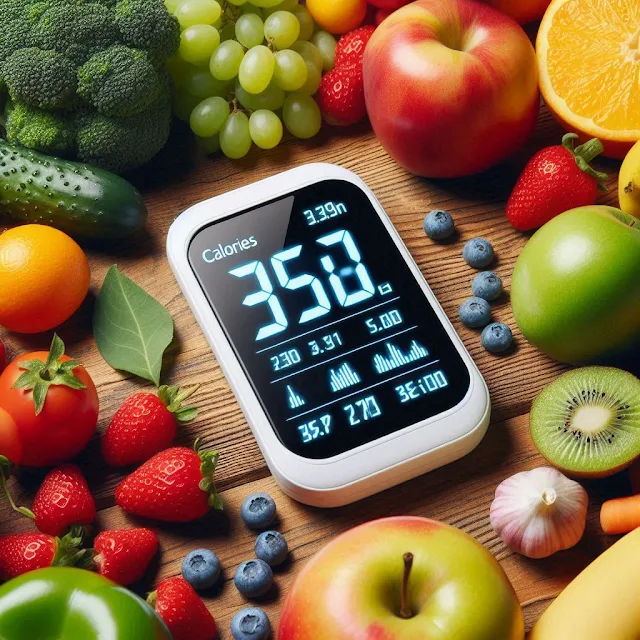What Are Calories, and Why Are They Important?
Calories are the units of energy that fuel every action in our bodies, from breathing to running marathons. The right balance of caloric intake ensures that your body has enough energy to function optimally without storing excess calories as fat.
- Energy Balance Principle: To maintain weight, the calories consumed must equal the calories burned. Consuming more calories than your body needs leads to weight gain, while eating fewer results in weight loss.
- Macronutrient Contribution: Carbohydrates, proteins, and fats each contribute differently to your calorie count:
- Carbohydrates: 4 calories per gram
- Proteins: 4 calories per gram
- Fats: 9 calories per gram
Understanding these values helps in designing a diet that aligns with your goals.
How to Calculate Your Ideal Caloric Intake
To determine your ideal caloric intake, you must first establish your Basal Metabolic Rate (BMR) and adjust for activity levels.
Step 1: Calculate Your BMR
Your BMR is the number of calories your body requires at rest to maintain vital functions such as breathing and digestion. Determine your BMR using the Harris-Benedict Formula.
For Men:
To determine your BMR, apply this formula: 88.362 + (13.397 × body weight in kg) + (4.799 × height in cm) - (5.677 × age in years).For Women:
The formula for calculating BMR is 447.593 + (9.247 × weight in kilograms) + (3.098 × height in centimeters) - (4.330 × age in years).Step 2: Factor in Your Activity Level
To calculate your Total Daily Energy Expenditure (TDEE), multiply your BMR by an appropriate activity factor.
- Sedentary (little to no exercise): BMR × 1.2
- For a lightly active lifestyle, involving light exercise or sports 1–3 days per week, calculate your TDEE by multiplying your BMR by 1.375.
- If you are moderately active, participating in exercise or sports 3–5 days per week, your TDEE is calculated by multiplying your BMR by 1.55.
- For those who are very active, engaging in intense exercise or sports 6–7 days a week, TDEE is calculated as BMR × 1.725.
- Extra active (very hard exercise/physical job): BMR × 1.9
Your TDEE indicates the total calories needed to maintain your current body weight.
Tailoring Your Caloric Intake to Your Goals
1. Weight Loss
For effective weight loss, target a daily caloric deficit of 500–750 calories. This will result in a steady weight loss of 0.5–1 kilogram each week.
- Concentrate on consuming low-calorie, nutrient-rich foods like vegetables, whole grains, and lean proteins.
- Monitor your intake using apps or food diaries to stay consistent.
2. Muscle Gain
If building muscle is your goal, a caloric surplus is necessary. Increase your intake by 250–500 calories daily, prioritizing:
- Protein-rich foods: Promote muscle repair and growth by consuming 1.6–2.2 grams of protein per kilogram of body weight.
- Complex carbohydrates: Fuel your workouts with entire grains, legumes, and starchy vegetables.
- Healthy fats: Include sources like nuts, seeds, and avocado for sustained energy.
3. Maintenance
To maintain your weight, consume calories equivalent to your TDEE. Balance is key:
- Combine a variety of macronutrients for sustained energy and overall health.
- Adjust portions as needed to account for slight variations in daily activity.
Factors That Influence Your Caloric Needs
Your caloric needs are not static. They can change based on various factors:
- Age: Metabolism slows with age, reducing caloric requirements.
- Body Composition: More muscle mass increases caloric needs, as muscle burns more calories at rest than fat.
- Health Conditions: Certain conditions like thyroid disorders can impact metabolism.
- Lifestyle Changes: Shifting from a sedentary to an active lifestyle significantly alters caloric needs.
Common Misconceptions About Calories
1. All Calories Are Equal
Although all calories provide energy, the origin of those calories is important. For example, 200 calories of broccoli provide fiber, vitamins, and minerals, whereas 200 calories of candy offer empty calories with little nutritional benefit.
2. Eating Less Is Always Better
Drastically reducing caloric intake can harm metabolism, leading to muscle loss and nutritional deficiencies. Sustainable caloric deficits are more effective.
3. Exercise Alone Is Enough
While exercise plays a critical role, diet contributes significantly to achieving and maintaining your goals. The most effective outcomes come from combining both approaches.
Tips for Tracking and Managing Your Caloric Intake
- Use Tracking Apps: Platforms like MyFitnessPal or Chronometer simplify calorie and nutrient tracking.
- Meal Prep: Preparing meals in advance ensures portion control and prevents overeating.
- Read Labels: Check nutritional labels for accurate calorie counts and portion sizes.
- Stay Hydrated: Sometimes thirst is mistaken for hunger; drinking water can prevent unnecessary snacking.
The Importance of Adjusting Your Intake Over Time
As your body composition, weight, or activity level changes, reassess your caloric needs. Regular adjustments ensure you continue progressing toward your goals without plateauing.
Understanding and applying the principles of ideal caloric intake is the cornerstone of a healthier, more energized life. By fueling your body with the right amount and quality of calories, you set the foundation for long-term success in any fitness or wellness endeavor.



